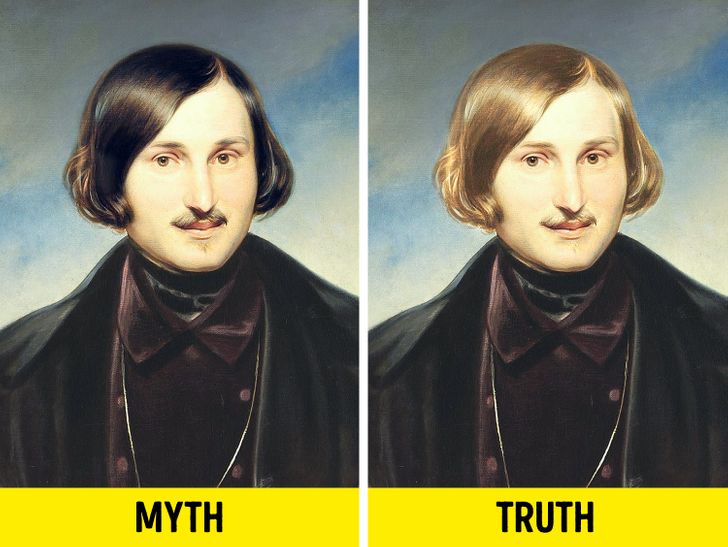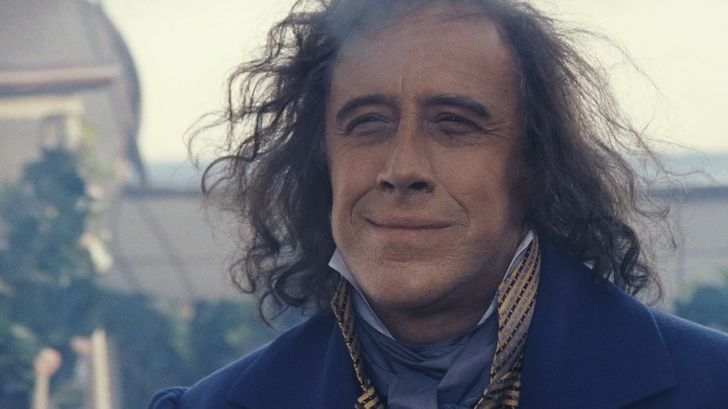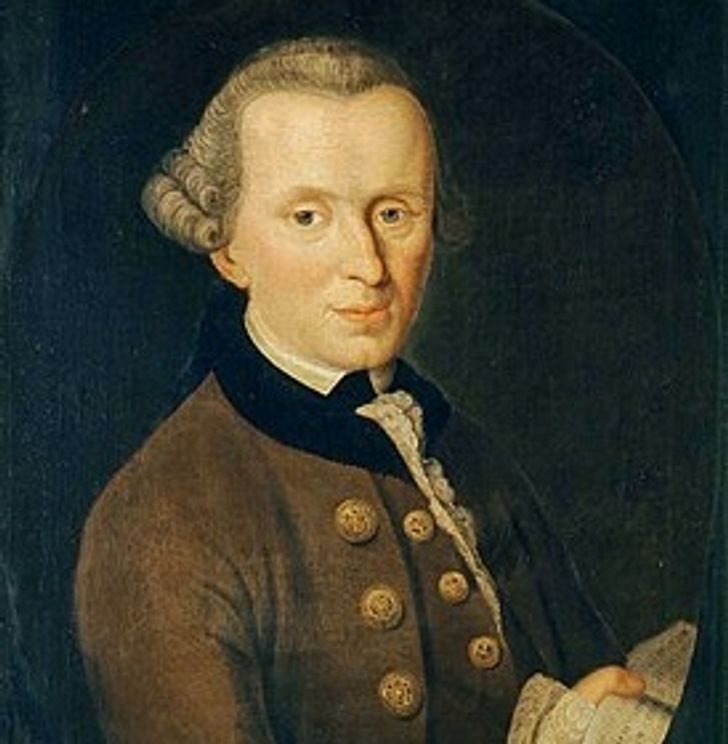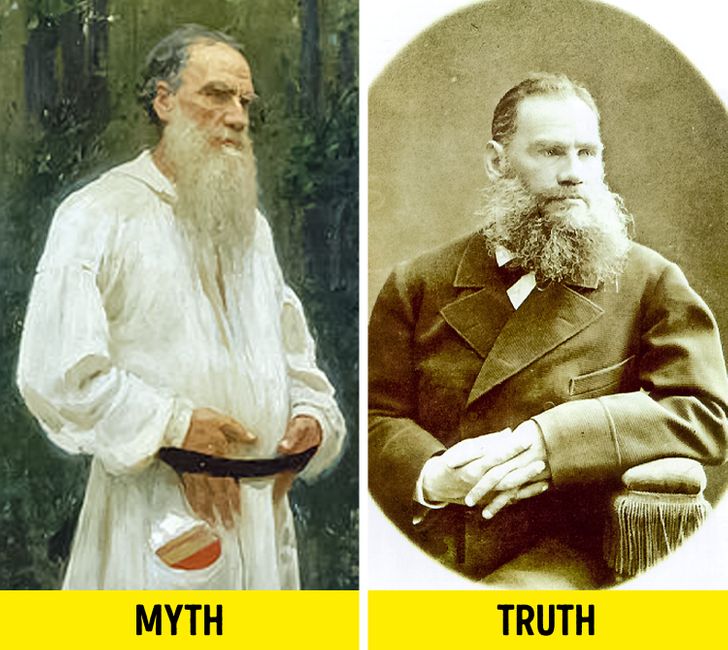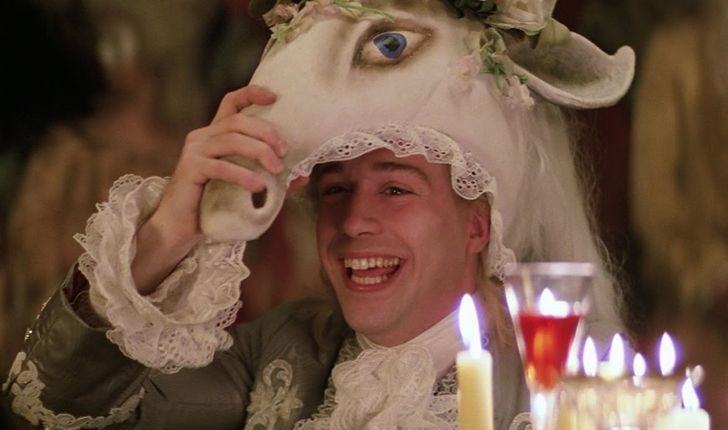I loved Christian Andersen's fairy tales when I was a child, I had a book and my mom had to read them over and over
6 Facts About Famous Geniuses That Are Actually Fake
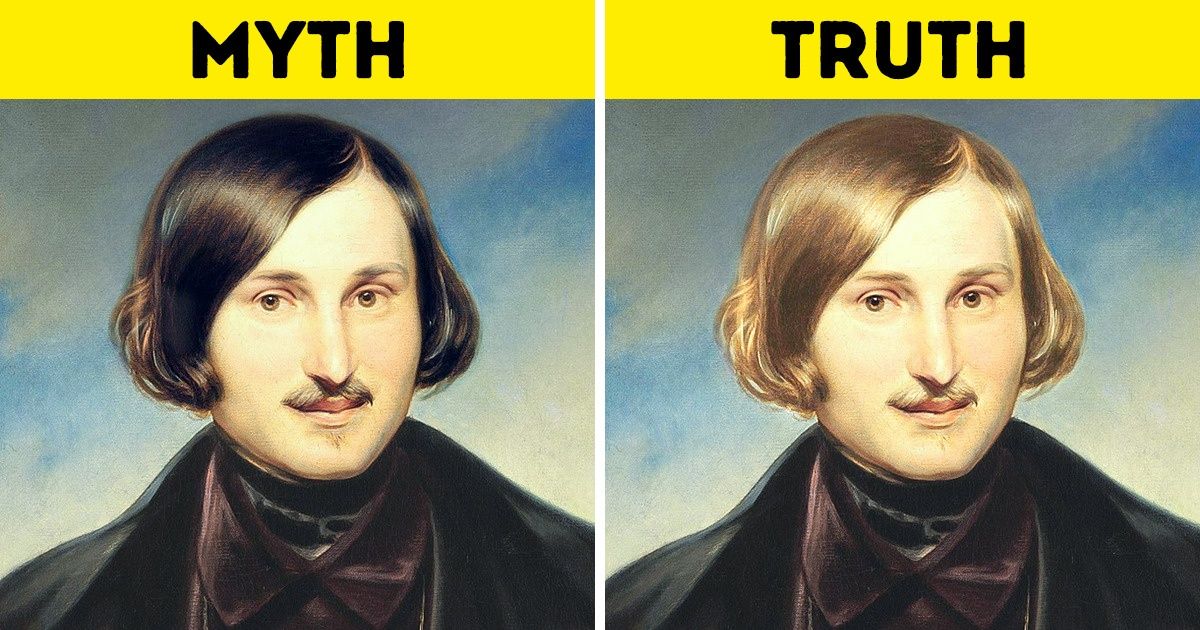
Beethoven was born in poverty, Mozart died in poverty, and Immanuel Kant never left Königsberg. Reading about how a genius became famous despite a terrible childhood or how a genius was forgotten is always really interesting. But very often, these amazing stories are exaggerations or sometimes, totally fake.
We at Bright Side decided to check if everything we knew about famous people was actually true. As it turns out, the descendants of these people often changed a detail or two, even if it was just about the color of their hair.
Nikolai Gogol was blonde.
All of us imagine the author of Dead Souls as a man with dark hair but as it turns out, we are wrong. The sister of the writer remembered that Gogol had light hair when he was a child but it got darker over time. But even after that, he didn’t have very dark hair as we’re used to seeing him. He was described as a man with “thick blonde hair on his shoulders.” The artist Ivan Aivazovsky also mentioned his blonde hair.
Beethoven was born to a wealthy family.
The house Ludwig van Beethoven was born in and grew up in
In fact, the composer was the second son of a singer from the Bonn Chapel and his wife Maria Magdalena Keverich. Their first child didn’t survive which was quite common for that time. Beethoven’s father made good money as a musician, even working for the court of Clemens August of Bavaria, and the family lived in a very nice house. More than that, the composer’s success is based on what his parents did. His father wanted to turn him into the second Mozart so he hired the best teachers for him.
Hans Christian Andersen loved children.
It is often said that Hans Christian Andersen resented his audience being children, as critics noted his later works seemed like they were written to appeal to adult audiences. This was partly because he didn’t have his own family, possibly a lifelong celibate, and because he didn’t want to be seen as just a children’s writer.
In life, Andersen would also read his stories out loud to children, but he did have limits: he didn’t like them to sit on his lap.
Immanuel Kant did travel outside of Königsberg.
Yes, Immanuel Kant lived his entire life in Königsberg but it doesn’t mean he never left it. For 4 years, the philosopher worked as a teacher outside his hometown. The myth that he’d never left Königsberg appeared because Kant really loved his hometown and believed he didn’t have to leave it to learn more about the world.
Tolstoy didn’t wear the clothes of peasants.
Artist Ilya Repin is partially responsible for promoting the image of Tolstoy as a man who wore a peasant shirt. When the writer saw the portrait of himself, he wasn’t very happy, especially being annoyed at being portrayed as barefoot.
Tolstoy would wear simple clothes but only for physical labor. When he was at home, he wore quite regular clothes, but unlike the clothes of peasants, his were made of expensive fabrics. And when he appeared in public, he wore nice clothes that included frockcoats, powdered shirts, and hats.
Mozart never lived in poverty.
Wolfgang Amadeus Mozart was a really successful musician and he earned very good money. But neither he nor his wife Constanze were good with money: they rented a luxurious apartment, they hired servants and sent their son to study at a good boarding school. This is why by the time he died, the family was in debt but many lenders decided to let them off the hook. More than that, after the composer’s death, Constanze was able to get an allowance which was a third of his salary. It was quite a lot for that time.
And as for Mozart’s funeral, it wasn’t sparse and there were visitors. He was buried in a mass grave but only because it was a tradition at the time.
Do you know any myths about famous people that turned out to be fake?
Comments
Related Reads
A Woman, 58, Harshly Criticized For Not Acting Age-Appropriate, Shatters Internet With Her Daring Photos

10 Travelers Who Took “Breaking the Rules” Way Too Far

20+ Moments That Remind Us That Kindness Costs Nothing but Means Everything

I Refused to Share My Inheritance With My Partner — I’m Not His Backup Plan

I Chose to Be Childfree, but Suddenly Became a Mom—And Now I’m Trapped

I Tried to Be the Husband My Wife Needed — She Figured Out What I Was Actually Doing

Everything Seemed Normal in My Marriage Until I Found the Part of Our Story My Wife Never Mentioned

12 Hilarious Doctor Stories That Prove Laughter Really Is the Best Medicine

My DIL Shut Me Out of the Family Vacation but I Didn’t Hold My Tongue

I Absolutely Refuse to Delay My Retirement to Save My Spoiled Daughter and Her Son

I Excluded My Wife From My Kids’ Core Memories—She’s Too Busy Working

18 Stories That Show Kindness Can Be the Strongest Force of All

